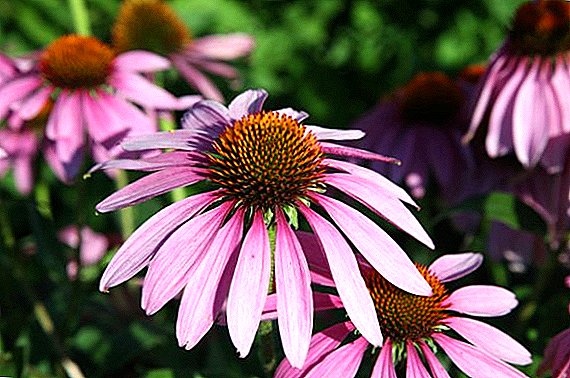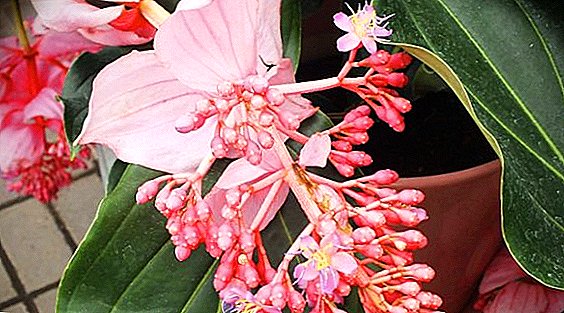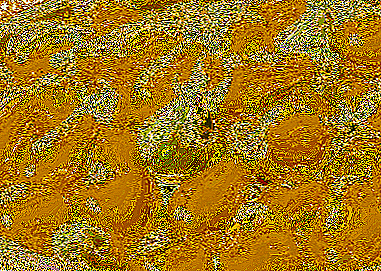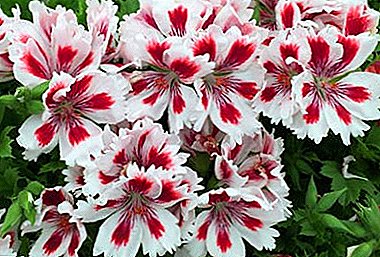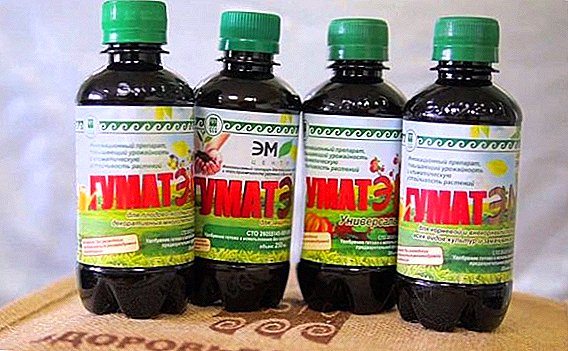 Sodium humate is an organic and mineral fertilizer, which is an excellent stimulator of plant growth. The preparation contains a complex of compounds of humic and fulvic acids with phosphorus, potassium, nitrogen and microelements. In turn, all these substances have a positive effect on vegetable, berry, room and flower crops.
Sodium humate is an organic and mineral fertilizer, which is an excellent stimulator of plant growth. The preparation contains a complex of compounds of humic and fulvic acids with phosphorus, potassium, nitrogen and microelements. In turn, all these substances have a positive effect on vegetable, berry, room and flower crops.
Sodium HUMATE: description and composition
Sodium HUMATE is a salt of humic acid. In ancient Egypt, this substance was used as a means to fertilize the earth. Then this process took place almost completely without human intervention. The Nile River, overflowing from its banks, flooded the nearby soil, and after the water flow, it was covered with a layer of fertile silt.
To date, brown coal, paper and alcohol production wastes are used to produce sodium humate. Also, sodium humate as a fertilizer is produced in an organic way. It is a waste product of Californian worms, although ordinary earthworms are also capable of producing this substance. 
The formation of sodium HUMATE is fairly simple: invertebrates absorb various organic wastes, which, after being processed in the intestine, are converted into fertilizer.
The original consistency of sodium humate is a black powder that can be dissolved in water. But liquid sodium humate also happens. It should be said that humic acids in dry form are poorly absorbed due to their low solubility. Therefore, using a plant growth stimulator such as sodium humate, it is desirable to give preference to its use in the liquid state.
Speaking about the composition of sodium humate, it is necessary to isolate the main active ingredient - sodium salts of humic acids. Acids are complex substances of organic origin. They contain more than twenty amino acids, carbohydrates, proteins and several tannins. In addition, acids are a source of wax, fat and lignin. All this is the remnants of rotting organic matter. 
Important! In the composition of sodium HUMATE there are heavy metals. However, due to the cheapness of the sodium salt, as compared with the potassium salt, the substance is in rather high demand.
Useful properties of sodium HUMATE for plants
Conducting numerous studies has shown that the substances contained in the fertilizer sodium humate, have a positive effect on plant crops. Humates contain organic salts, which activate the supply of plants with all the necessary trace elements. In turn, these trace elements stimulate the development of plants and increase their immunity.
It was also noted that sodium humate reduces plant demand for nitrogen fertilizers by up to 50%, and also increases crop yield by 15–20%. This organic fertilizer restores the chemical and physical properties of the soil, which in turn increases the resistance of plants to radionuclides and nitrates.
Other organic fertilizers are often used in crop production: peat, potassium humate, potassium salt, liquid biohumus, compost.
 Top dressing with sodium humate provides:
Top dressing with sodium humate provides:
- Increasing the number of biologically active components in plants
- The best survival rate and germination in the treatment of roots and seeds before planting
- The accumulation of vitamins and nutrients in vegetables and fruits
- Increased yield and accelerated ripening
Did you know? The fact of the positive influence of sodium humate on the development of plants was first established at the end of the XIX century. After that, he found confirmation in many scientific papers.
How to dilute sodium humate, instructions for use for plants
Sodium humate used for tomatoes or other plants is best absorbed by them through the roots. To facilitate this process it is necessary to prepare a special solution for irrigation. To prepare it you need to take one tablespoon of humate, which is then dissolved in a ten-liter bucket of water. It is also necessary to mention that before applying the sodium humate the plant must be gradually accustomed to such a fertilizer.  So, after plant transplantation, during the adaptation period, it is recommended to pour 0.5 liters of solution into the soil. Then, during the period when the buds are formed and bloom, the dosage of the drug must be brought to one liter.
So, after plant transplantation, during the adaptation period, it is recommended to pour 0.5 liters of solution into the soil. Then, during the period when the buds are formed and bloom, the dosage of the drug must be brought to one liter.
Important! Sodium humate can be used to detoxify the soil. In this case, the dosage is 50 grams of sodium humate for every 10 square meters of soil.
For seed treatment
Sodium humate for seed treatment is applied in a proportion of 0.5 grams per liter of water. In order to accurately measure half a gram of a substance, you can use a regular teaspoon. The volume of a standard teaspoon is 3 grams. Based on this, a half gram is 1/3 tsp. It is better to stock up on a large amount of substance, for this you need to dilute 1 gram of humate in two liters of water. To prepare such a composition, you can take a regular plastic bottle, and then, if necessary, take a seed treatment solution from it.  Sodium humate becomes liquid, and the instructions for using such a fertilizer sodium humate are quite simple: the seeds are soaked in the prepared solution for two days (cucumber seeds and flowers - for a day). After that, it will remain only to dry them well.
Sodium humate becomes liquid, and the instructions for using such a fertilizer sodium humate are quite simple: the seeds are soaked in the prepared solution for two days (cucumber seeds and flowers - for a day). After that, it will remain only to dry them well.
Did you know? For processing one hectare of land, only 200 milliliters of sodium humate is needed.
For watering
Often a solution of sodium humate is used in the initial period of the growing season, the application interval is 10-14 days. At the beginning of the dose per plant is 0.5 liters, then it is brought to one liter. It is recommended to water the planted seedlings with humate immediately after planting or a few days later. The second watering is carried out during the budding period, and the third - during flowering.
To prepare the solution you need to take one tablespoon of sodium humate and dissolve it in 10 liters of warm water. It is better to take a small amount of water with a temperature of about + 50˚С. A humate is poured into it and thoroughly stirred. Later the remaining volume of fluid is added. Sodium HUMATE Liquid has a limited lifespan, which is one month. All this time it should be stored in a dark, cool place. 
Important! It is necessary to pour in the humate solution directly under the root of the plant.
As a fertilizer
In this case, the concentration of the substance should be somewhat less. First of all, sodium humate is used for foliar feeding, that is, for spraying. This method has the advantage, because in this case leaf plates are wetted, and all the useful substances are absorbed on the surface of the sheet, and actively enter the plant.
This significantly reduces the consumption of the solution, because you do not need to carry buckets around the garden. Especially convenient to use sodium humate for spraying tomatoes. Preparation of the solution for spraying involves dilution of three grams of humate in 10 liters of water.
Soil treatment with sodium humate
Sodium HUMATE solution allows to improve the quality of the soil, as well as its detoxification. To do this, scatter 50 grams of humate over an area of 10 square meters. For the convenience of distribution of a substance in a given area, it can be pre-mixed with sand. After processing, the soil should be loosened with a hoe or rake.  Also, if you mix sodium HUMATE with ash and sand, and then scatter this powder over the snow in early spring, you will prepare the garden bed for the next sowing. The snow will begin to melt much faster, and you will only have to cover this place with a film and the soil will be ready for planting.
Also, if you mix sodium HUMATE with ash and sand, and then scatter this powder over the snow in early spring, you will prepare the garden bed for the next sowing. The snow will begin to melt much faster, and you will only have to cover this place with a film and the soil will be ready for planting.
Did you know? When drip irrigation will need only 1 liter of humate solution per 1000 liters of water.
Benefits of using Sodium HUMATE for growing plants
The use of sodium humate for growing plants has a number of advantages:
- Reducing the dose of mineral fertilizers. The use of sodium humate in accordance with the instructions for use can reduce the dose of mineral fertilizers to 25%.
- Yield increase. Timely and correct application of humate increases the yield by 10-30%, depending on the crop.
- Significant reduction in stress after pesticide treatment. With the combined use of humate and various pesticides, "chemical stress" for plants becomes minimal.
- Improving the properties of the soil. Sodium humate allows to enrich the soil with useful substances, and will also stimulate the development of the fauna and microflora of the soil. Also, the biological processes of humus formation become more balanced.
- The development of a strong root system. Timely seed treatment will stimulate the uniform development of the plant root system. In turn, plants better absorb mineral micro-and macronutrients.
- Strengthening drought-and frost resistance. Laboratory and field experiments have shown that sodium humate acts as an adaptogen, that is, it strengthens the plant's immune system, while increasing its resistance to various adverse conditions.



